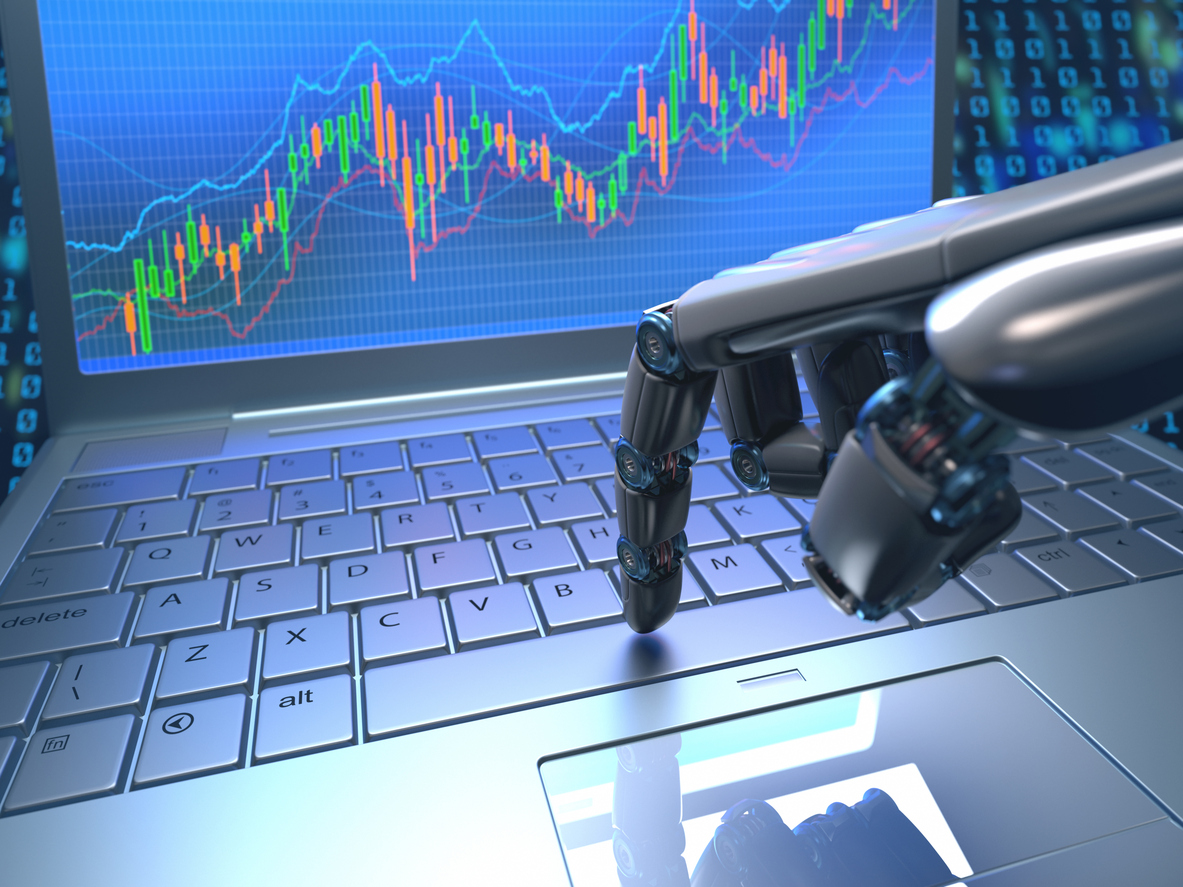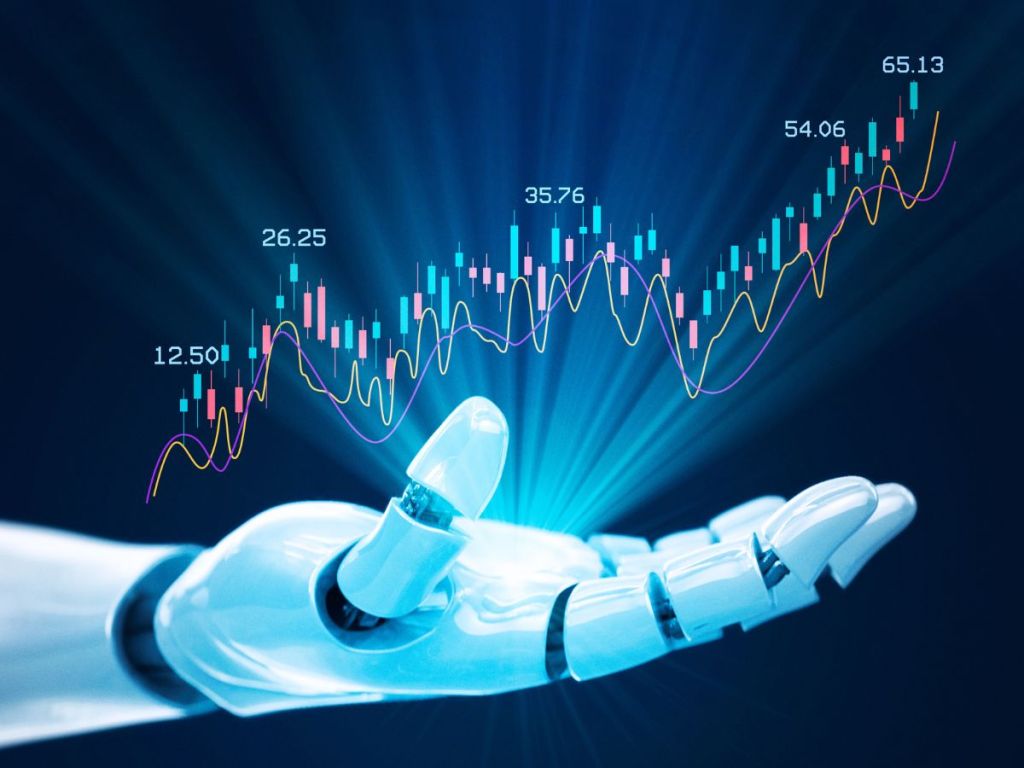Startups from every sector are experimenting with AI solutions or machine learning. Nine out of 10 hedge fund traders are using artificial intelligence for portfolio returns, and nearly 20% of young Australian investors are using AI to select these investments. It would be easy to presume that crypto traders are along for the ride as well. The era of AI crypto trading has arrived.
Crypto traders use various cryptocurrencies (trading, staking, lending, mining and P2E games) to generate passive or active income. AI usage in these tasks is increasing, with some researchers estimating AI crypto trading to grow at a CAGR (compound annual growth rate) above 23% between 2023 and 2030.
So why is AI growing so fast in crypto trading, and what problems does it solve to warrant such popularity?
Human ability, expanded with technology
Typically, crypto traders have two approaches to their decision-making processes.
- Fundamental analysis studies industry trends, macroeconomic indicators, financial statements and company news to evaluate an asset’s value. The trader can then decide if an asset is over or undervalued and make educated financial decisions accordingly.
- Technical analysis is more “numbers-driven” and looks to identify patterns, trends and indicators by analysing historical price and volume data. This can help a trader understand market sentiment, which can be used to predict investment trends.
Both approaches can help traders make informed, data-backed trading decisions. They can fine-tune their strategies and maximise their trade profitability.
Yet, we are emotional beings, which can lead us to make irrational decisions by buying an asset solely based on fear, greed, excitement and even anger. The simple fact is that humans have short attention spans, especially in the age of TikTok and doom scrolling. We’re great at figuring out new things and intuiting, but consistently keeping up with fluctuating data from multiple sources is not our forte.

Benefits of AI crypto trading
AI-based crypto trading solutions often have advanced pattern recognition capabilities and analysis techniques. They analyse market regimes, signals and price fluctuations that may be hard to identify for individual traders.
Artificial intelligence tools can save traders significant time by analysing numerous sources to identify trading signals across multiple protocols. As crypto is a volatile market that operates 24/7, traders must respond swiftly and accurately. Here AI can offer a significant advantage, as an algorithm has no need for significant downtime or rest.
AI can also provide benefits in terms of scalability. Artificial intelligence can monitor several markets simultaneously with ease as an interconnected algorithm, something that even the best multitasking humans struggle to accomplish.
Where AI can’t help
Despite its name, AI is not intelligent in the traditional sense. For now, it remains an advanced series of algorithms capable of correcting itself over time. AI tools use data, rules and logic to support their decision-making, which can come in handy, but also comes without human intuition.
Intuition helps humans understand new concepts and experiences through prior knowledge and a conscious sense of what is right and wrong. This experience correlates with the ability to perform a task. Traders regularly employ intuition when trying to decipher market dynamics beyond data analytics, and despite risk awareness (remember the story of a dogecoin millionaire).
This subjective understanding plays a crucial role in decision-making processes. Since AI lacks in this area, I believe the best approach for now is working with a human trader assisted by an artificial intelligence model.
3 Tips for AI crypto trading
1. AI-generated trading signals
Trading signals are analysis-based indicators that let you know it could be time to sell or trade an asset. These indicators are usually based on technical analysis, which includes pattern recognition — something AI excels at. This proficiency is leading many companies to introduce AI-based solutions, and trade assistants are coming.
There are now crypto platforms that use AI as a dedicated trading assistant. They claim they can conduct real-time analysis based on breaking cryptocurrency news, market expert tweets and social media trends. The tool’s goal is to gather all relevant financial news for traders before they commit to a transaction.
2. Automated trading
Automated trading, or algorithmic trading, is a service that allows a user to create custom rules for an algorithm or bot. Using these rules, a bot can automatically conduct trades if certain predefined conditions are met. Believe it or not, this kind of trading has been around for a while, but with AI automatic trading may become more robust.
The belief is that machine learning can train bots with market data so the algorithm could begin to recognise patterns.
Take Bitcoin for example. An AI armed with historical price data would be able to recognise the conditions that caused the coin’s price to dip on March 10, and automatically avoid making poor trading decisions if such conditions reappeared. Ideally, the AI would make these decisions based not only on historical data, but personal user preferences such as risk aversion, or other strategic parameters.
3. Fraud detection
You may be getting used to this claim, but AI is incredibly good at recognising trends, and fraud is no stranger to patterns. As early as 2006, AI was being employed to recognise cheaters in online games including Counter Strike, and with fraud on the rise, so is fraud data.
A lot of fraud begins with gaining a user’s confidence before acting quickly to drain a crypto wallet or transfer funds. Using the ever-increasing avalanche of fraud data, AI can provide early warnings or even cut off access before a fraudster can cause too much damage.
It’s a good thing too, because security services are not the only ones jumping on the AI bandwagon. Around 70% of U.S. financial institutions reported at least $770,000 in fraud in 2022 alone. With financial fraud increasing every year, we may be entering a period where AI will be necessary to defeat AI.

The inevitability of AI in everything
The current outlook for AI in the crypto industry forecasts AI assistants helping human traders make faster, more informed decisions, shore up security and automate more menial tasks.
While claims of AI’s power may seem hyperbolic now, algorithms continue to improve in multiple sectors, and its proliferation is apparent. With the boons it brings to saving time, information gathering and safety, I believe that AI’s use in crypto is not so much an “if” but a “when”.
For me the decision that traders need to make now is whether they jump on the bandwagon and sign up for companies centred around AI assistance, or stick around long enough until their favourite app incorporates it, because the change is coming.
This will not be a case where people with AI outperform their competitors, but wholesale integration along the lines of social media, voice recognition or APIs.
The only thing left is to determine how many people will be interested in experiencing a new level of digital interaction today. I, for one, enjoy the thrill of early adoption.





